The Impact of Aging-Preventive Algorithms on BESS Sizing under AGC Performance Standards
Abstract
:1. Introduction
State of the Art
2. Dynamic Models
2.1. AGC System
2.2. Dynamic of the BESS
2.3. BESS Aging-Preventing Operation and Strategy for SFC
3. Criteria for BESS Capacity Estimation
3.1. Error Indicator of AGC Tracking
3.2. Performance Criteria
4. Simulation Results
Storage Capacity Results
5. Conclusions and Future Work
Author Contributions
Funding
Institutional Review Board Statement
Informed Consent Statement
Data Availability Statement
Conflicts of Interest
References
- Ulbig, A.; Borsche, T.S.; Andersson, G. Impact of low rotational inertia on power system stability and operation. IFAC Proc. Vol. 2014, 19, 7290–7297. [Google Scholar] [CrossRef] [Green Version]
- Mazzeo, D.; Matera, N.; De Luca, P.; Baglivo, C.; Congedo, P.M.; Oliveti, G. A literature review and statistical analysis of photovoltaic-wind hybrid renewable system research by considering the most relevant 550 articles: An upgradable matrix literature database. J. Clean. Prod. 2021, 295, 126070. [Google Scholar] [CrossRef]
- Hannan, M.; Wali, S.; Ker, P.; Rahman, M.A.; Mansor, M.; Ramachandaramurthy, V.; Muttaqi, K.; Mahlia, T.; Dong, Z. Battery energy-storage system: A review of technologies, optimization objectives, constraints, approaches, and outstanding issues. J. Energy Storage 2021, 42, 103023. [Google Scholar] [CrossRef]
- Canevese, S.; Gatti, A.; Micolano, E.; Pellegrino, L.; Rapizza, M. Battery Energy Storage Systems for frequency regulation: Simplified aging evaluation. In Proceedings of the 2017 6th International Conference on Clean Electrical Power (ICCEP), Santa Margherita Ligure, Italy, 27–29 June 2017. [Google Scholar] [CrossRef]
- Islam, M.M.; Dagli, C.H.; Sun, Z. A Model to Estimate the Lifetime of BESS for the Prosumer Community of Manufacturers with OGS. Procedia Comput. Sci. 2020, 168, 186–194. [Google Scholar] [CrossRef]
- Xu, D.; Kuo, X.; Nan, L.; Yaping, H.; Zhe, Z.; Qixing, L. Optimal Design and Application of AGC Performance Index Measurement Standards for Generating Units Adapted To the China Southern Regional Frequency Regulation Auxiliary Service Market. J. Phys. Conf. Ser. 2021, 1802, 032138. [Google Scholar] [CrossRef]
- Sadeghi-Mobarakeh, A.; Mohsenian-Rad, H. Performance Accuracy Scores in CAISO and MISO Regulation Markets: A Comparison Based on Real Data and Mathematical Analysis. IEEE Trans. Power Syst. 2018, 33, 3196–3198. [Google Scholar] [CrossRef]
- Nguyen, T.A.; Byrne, R.H.; Concepcion, R.J.; Gyuk, I. Maximizing revenue from electrical energy storage in MISO energy & frequency regulation markets. IEEE Power Energy Soc. Gen. Meet. 2018, 2018, 1–5. [Google Scholar] [CrossRef]
- Yang, Y.; Bremner, S.; Menictas, C.; Kay, M. Battery energy storage system size determination in renewable energy systems: A review. Renew. Sustain. Energy Rev. 2018, 91, 109–125. [Google Scholar] [CrossRef]
- Mulleriyawage, U.; Shen, W. Impact of demand side management on optimal sizing of residential battery energy storage system. Renew. Energy 2021, 172, 1250–1266. [Google Scholar] [CrossRef]
- Sanjareh, M.B.; Nazari, M.H.; Gharehpetian, G.B.; Ahmadiahangar, R.; Rosin, A. Optimal scheduling of HVACs in islanded residential microgrids to reduce BESS size considering effect of discharge duration on voltage and capacity of battery cells. Sustain. Energy Grids Netw. 2021, 25, 100424. [Google Scholar] [CrossRef]
- Uchman, W.; Kotowicz, J.; Li, K.F. Evaluation of a micro-cogeneration unit with integrated electrical energy storage for residential application. Appl. Energy 2021, 282, 116196. [Google Scholar] [CrossRef]
- Anselma, P.G.; Kollmeyer, P.; Lempert, J.; Zhao, Z.; Belingardi, G.; Emadi, A. Battery state-of-health sensitive energy management of hybrid electric vehicles: Lifetime prediction and ageing experimental validation. Appl. Energy 2021, 285, 116440. [Google Scholar] [CrossRef]
- Li, S.; He, H.; Su, C.; Zhao, P. Data driven battery modeling and management method with aging phenomenon considered. Appl. Energy 2020, 275, 115340. [Google Scholar] [CrossRef]
- Li, Y.; Sheng, H.; Cheng, Y.; Stroe, D.I.; Teodorescu, R. State-of-health estimation of lithium-ion batteries based on semi-supervised transfer component analysis. Appl. Energy 2020, 277, 115504. [Google Scholar] [CrossRef]
- Li, X.; Huang, Z.; Tian, J.; Tian, Y. State-of-charge estimation tolerant of battery aging based on a physics-based model and an adaptive cubature Kalman filter. Energy 2021, 220, 119767. [Google Scholar] [CrossRef]
- Šeruga, D.; Gosar, A.; Sweeney, C.A.; Jaguemont, J.; Van Mierlo, J.; Nagode, M. Continuous modelling of cyclic ageing for lithium-ion batteries. Energy 2021, 215, 119079. [Google Scholar] [CrossRef]
- Li, J.; Wang, D.; Deng, L.; Cui, Z.; Lyu, C.; Wang, L.; Pecht, M. Aging modes analysis and physical parameter identification based on a simplified electrochemical model for lithium-ion batteries. J. Energy Storage 2020, 31, 101538. [Google Scholar] [CrossRef]
- Calero, F.; Cañizares, C.A.; Bhattacharya, K. Dynamic Modeling of Battery Energy Storage and Applications in Transmission Systems. IEEE Trans. Smart Grid 2021, 12, 589–598. [Google Scholar] [CrossRef]
- Rancilio, G.; Rossi, A.; Di Profio, C.; Alborghetti, M.; Galliani, A.; Merlo, M. Grid-Scale BESS for Ancillary Services Provision: SoC Restoration Strategies. Appl. Sci. 2020, 10, 4121. [Google Scholar] [CrossRef]
- Cheng, Y.; Tabrizi, M.; Sahni, M.; Povedano, A.; Nichols, D. Dynamic Available AGC Based Approach for Enhancing Utility Scale Energy Storage Performance. IEEE Trans. Smart Grid 2014, 5, 1070–1078. [Google Scholar] [CrossRef]
- Doenges, K.; Egido, I.; Sigrist, L.; Lobato Miguélez, E.; Rouco, L. Improving AGC Performance in Power Systems with Regulation Response Accuracy Margins Using Battery Energy Storage System (BESS). IEEE Trans. Power Syst. 2020, 35, 2816–2825. [Google Scholar] [CrossRef]
- Perez, A.; Moreno, R.; Moreira, R.; Orchard, M.; Strbac, G. Effect of Battery Degradation on Multi-Service Portfolios of Energy Storage. IEEE Trans. Sustain. Energy 2016, 7, 1718–1729. [Google Scholar] [CrossRef]
- Chavez, H.; Baldick, R.; Matevosyan, J. CPS1 compliance-constrained AGC gain determination for a single-balancing authority. IEEE Trans. Power Syst. 2014, 29, 1481–1488. [Google Scholar] [CrossRef]
- Chávez, H.; Lee, D.; Baldick, R. CPS1-Compliant Regulation Using a PSD Analysis of Wind Expansion in a Single Balancing Authority. IEEE Trans. Power Syst. 2015, 6, 976–983. [Google Scholar] [CrossRef]
- Chavez, H.; Baldick, R.; Sharma, S. Regulation adequacy analysis under high wind penetration scenarios in ERCOT Nodal. IEEE Trans. Sustain. Energy 2012, 3, 743–750. [Google Scholar] [CrossRef]
- Lee, D.; Kim, J.; Baldick, R. Stochastic optimal control of the storage system to limit ramp rates of wind power output. IEEE Trans. Smart Grid 2013, 4, 2256–2265. [Google Scholar] [CrossRef]
- Atalay, S.; Sheikh, M.; Mariani, A.; Merla, Y.; Bower, E.; Widanage, W.D. Theory of battery ageing in a lithium-ion battery: Capacity fade, nonlinear ageing and lifetime prediction. J. Power Source 2020, 478, 229026. [Google Scholar] [CrossRef]
- Alabi, T.M.; Lu, L.; Yang, Z. A novel multi-objective stochastic risk co-optimization model of a zero-carbon multi-energy system (ZCMES) incorporating energy storage aging model and integrated demand response. Energy 2021, 226, 120258. [Google Scholar] [CrossRef]
- Rancilio, G.; Lucas, A.; Kotsakis, E.; Fulli, G.; Merlo, M.; Delfanti, M.; Masera, M. Modeling a Large-Scale Battery Energy Storage System for Power Grid Application Analysis. Energies 2019, 12, 3312. [Google Scholar] [CrossRef] [Green Version]
- Zhang, S.; Liu, H.; Wang, F.; Yan, T.; Wang, K. Secondary frequency control strategy for BESS considering their degree of participation. Energy Rep. 2020, 6, 594–602. [Google Scholar] [CrossRef]
- Jaseena, K.; Kovoor, B.C. Deterministic weather forecasting models based on intelligent predictors: A survey. J. King Saud Univ. Comput. Inf. Sci. 2020. [Google Scholar] [CrossRef]
- Mamun, A.A.; Sohel, M.; Mohammad, N.; Haque Sunny, M.S.; Dipta, D.R.; Hossain, E. A Comprehensive Review of the Load Forecasting Techniques Using Single and Hybrid Predictive Models. IEEE Access 2020, 8, 134911–134939. [Google Scholar] [CrossRef]
- Jaleeli, N.; VanSlyck, L. NERC’s new control performance standards. IEEE Trans. Power Syst. 1999, 14, 1092–1099. [Google Scholar] [CrossRef]
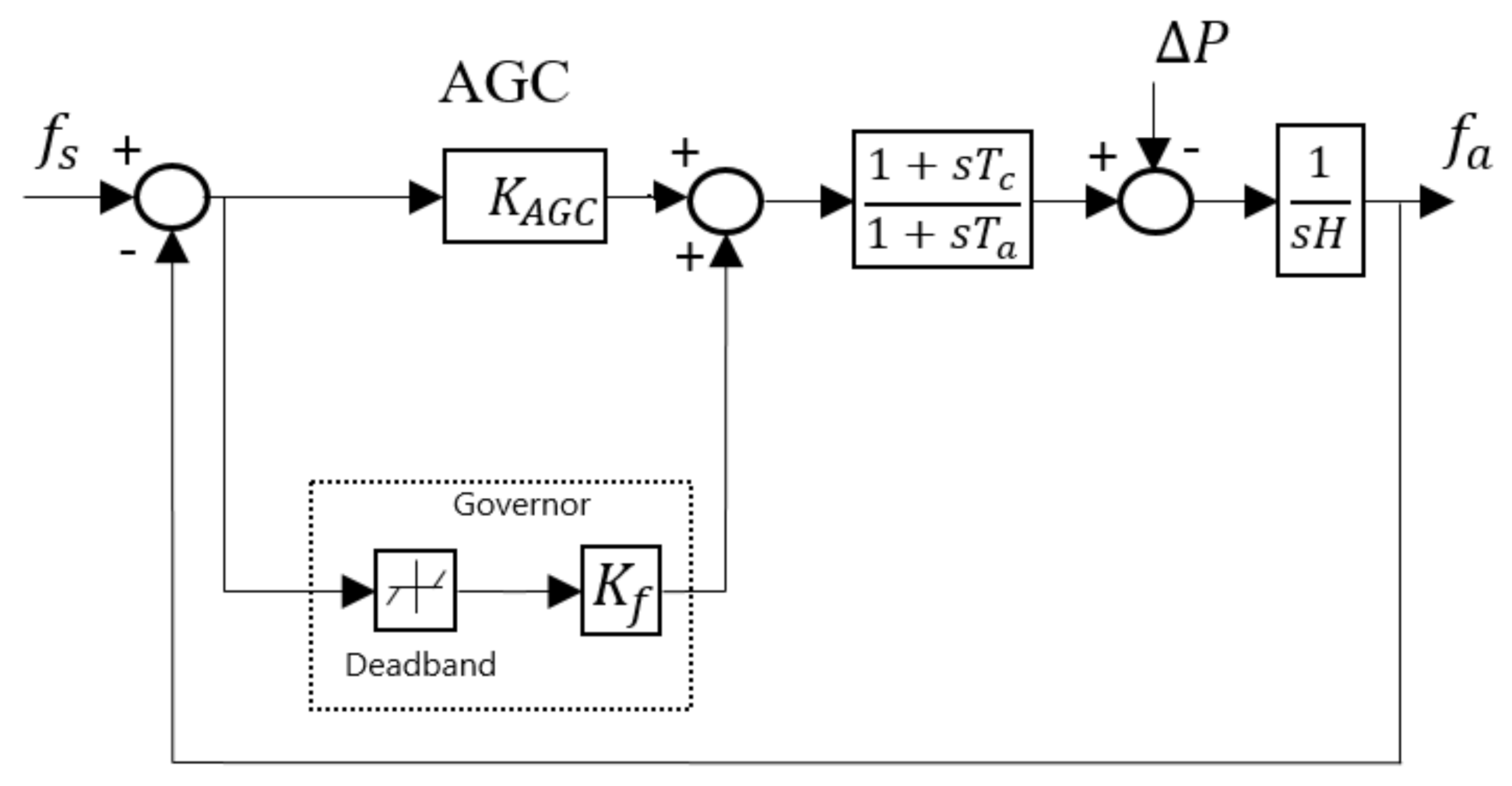

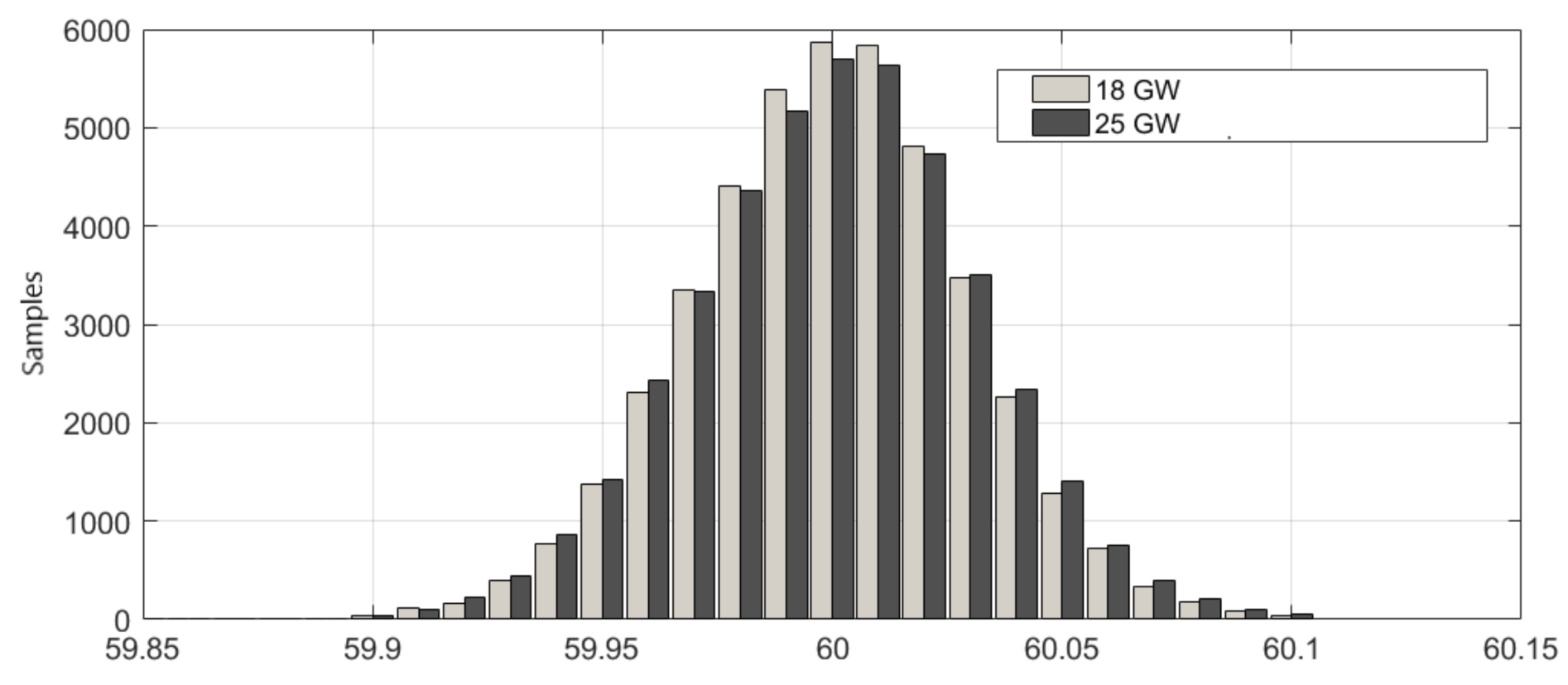
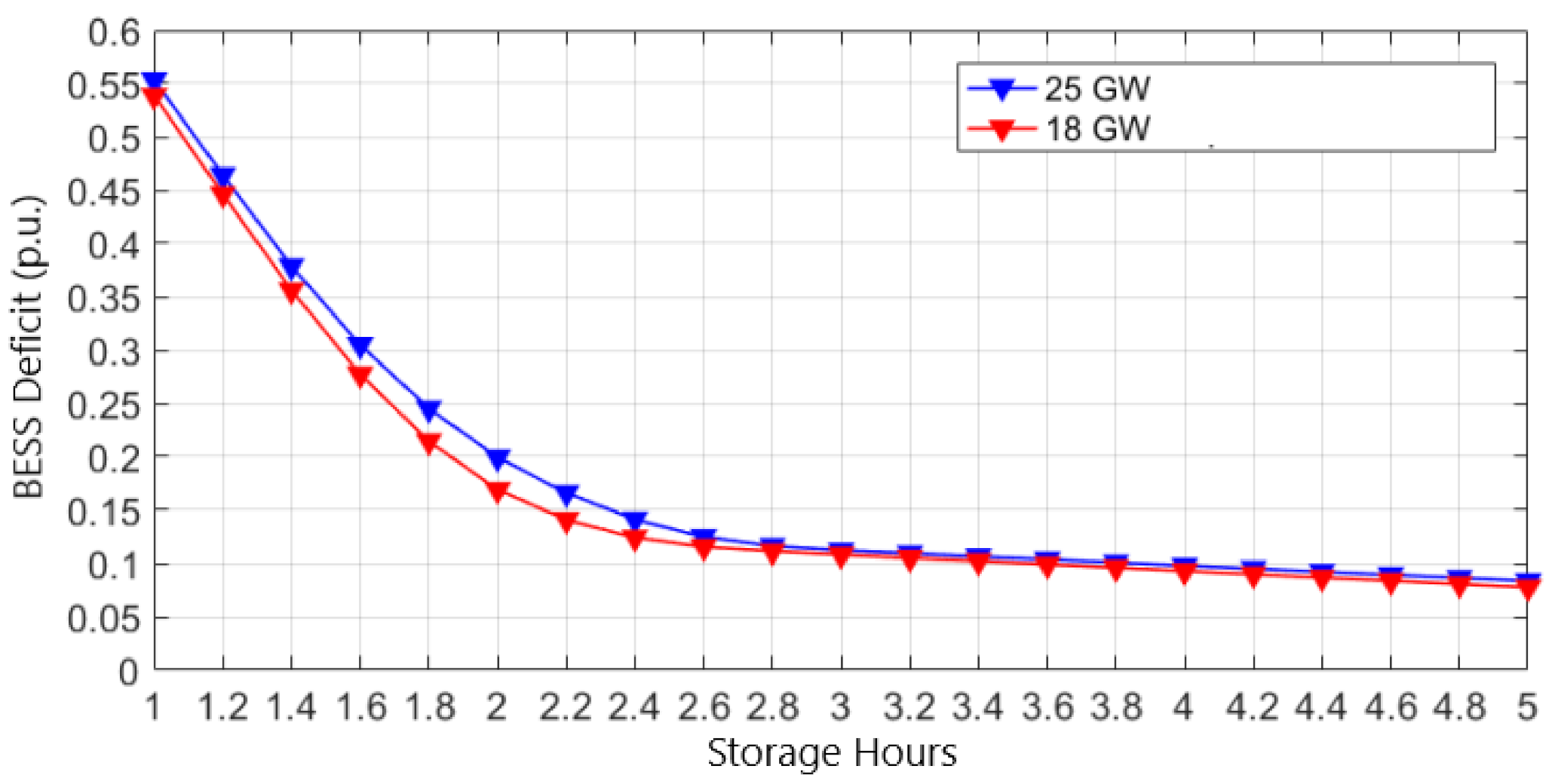
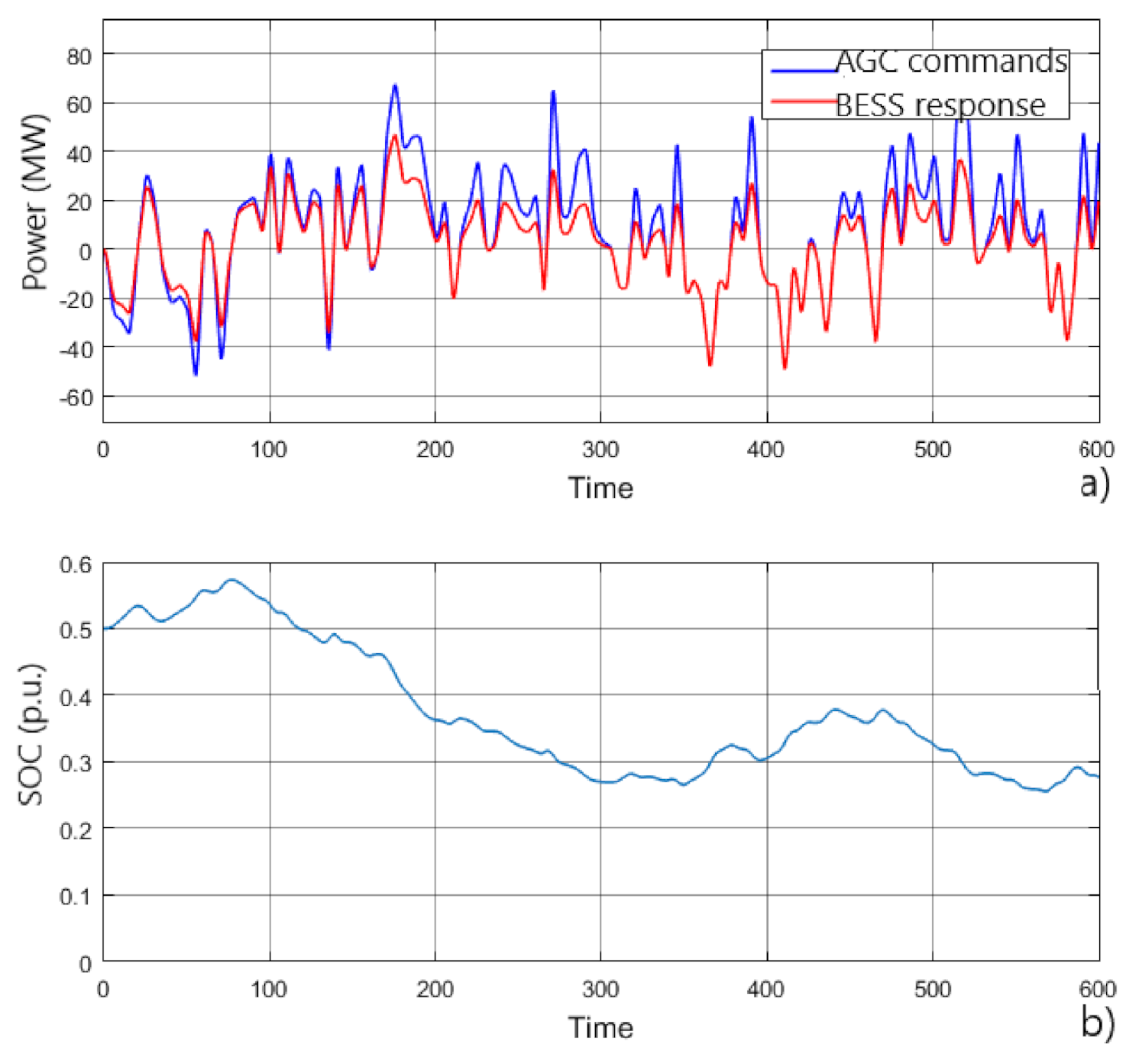
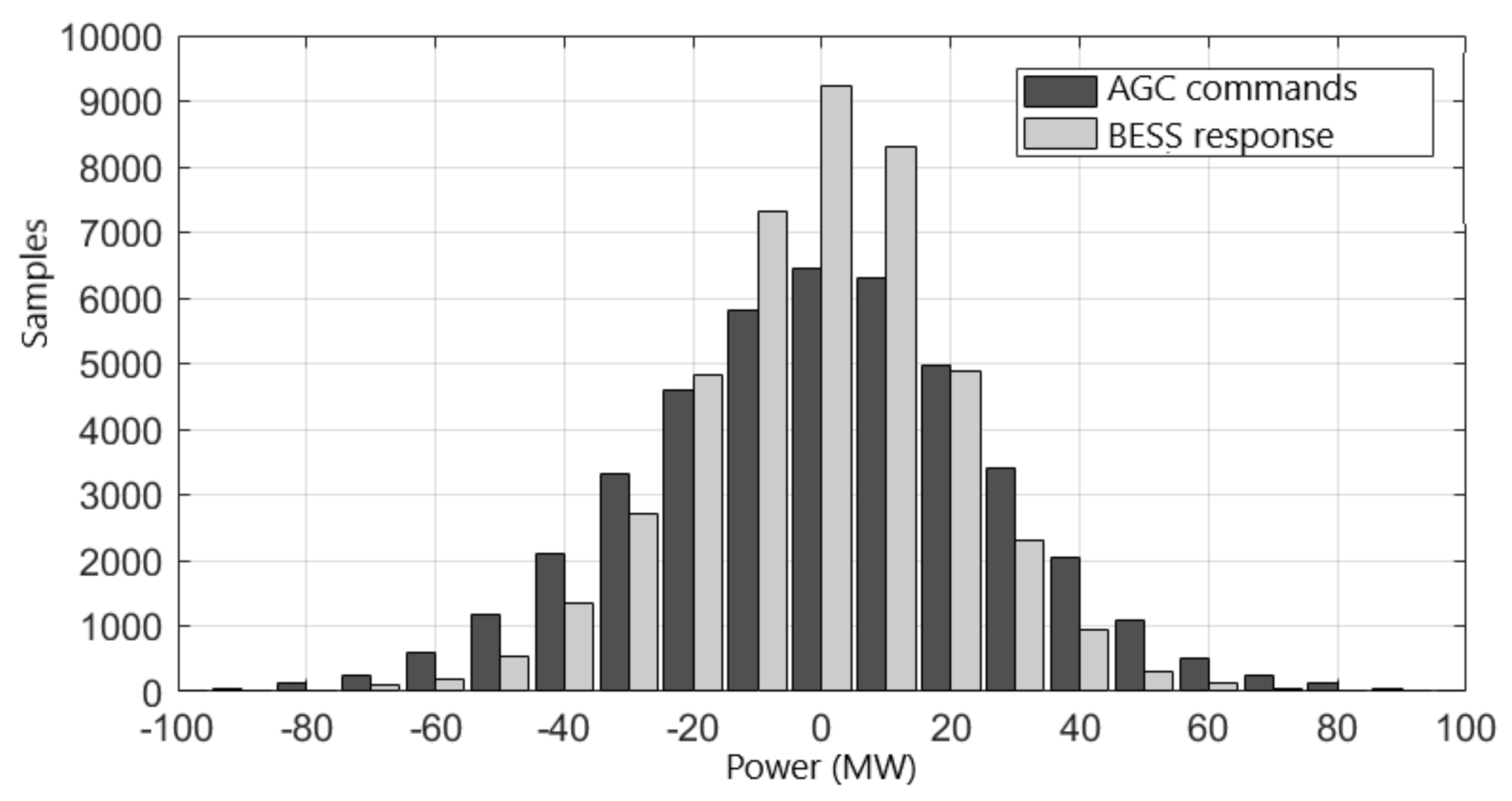
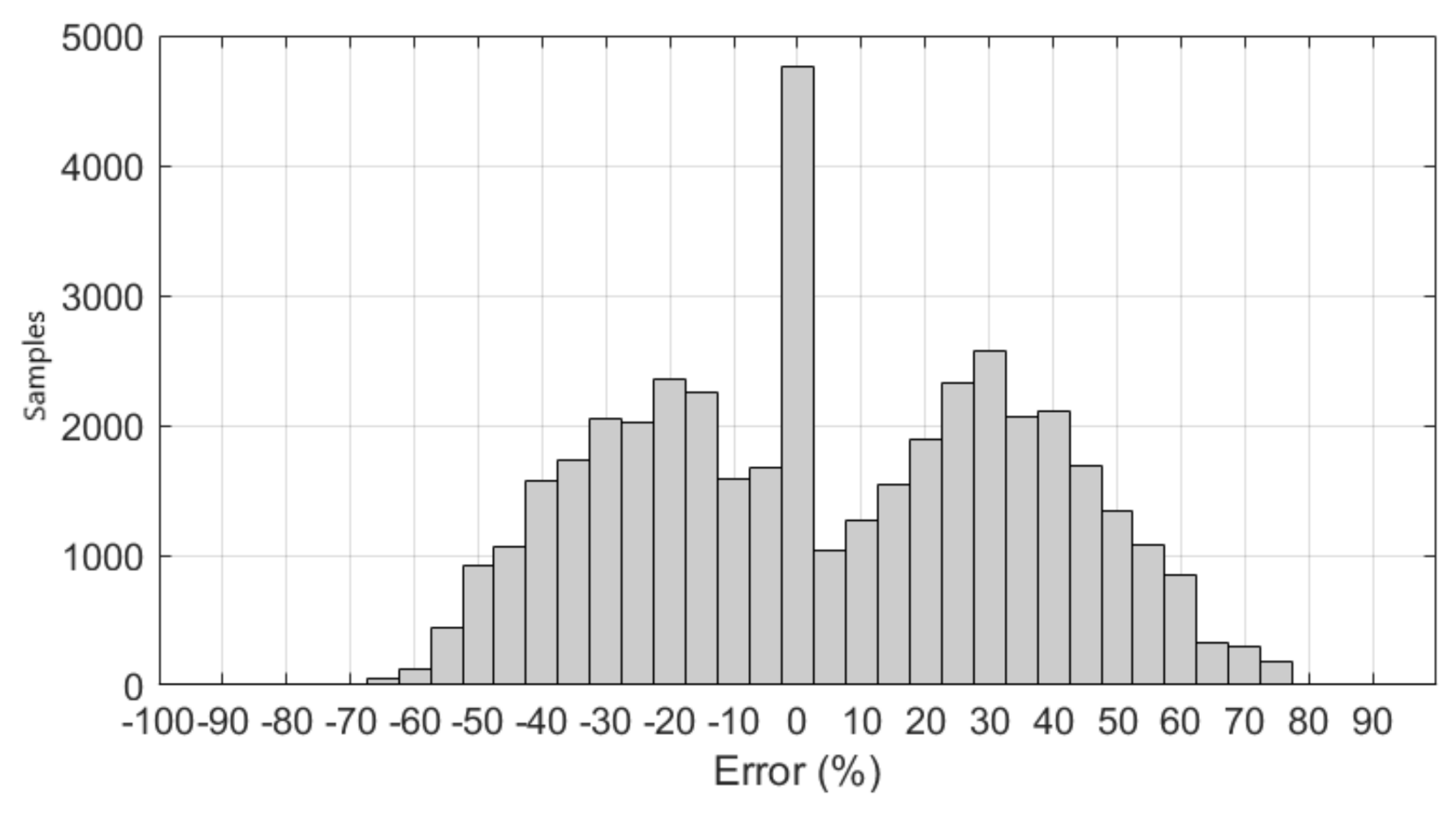
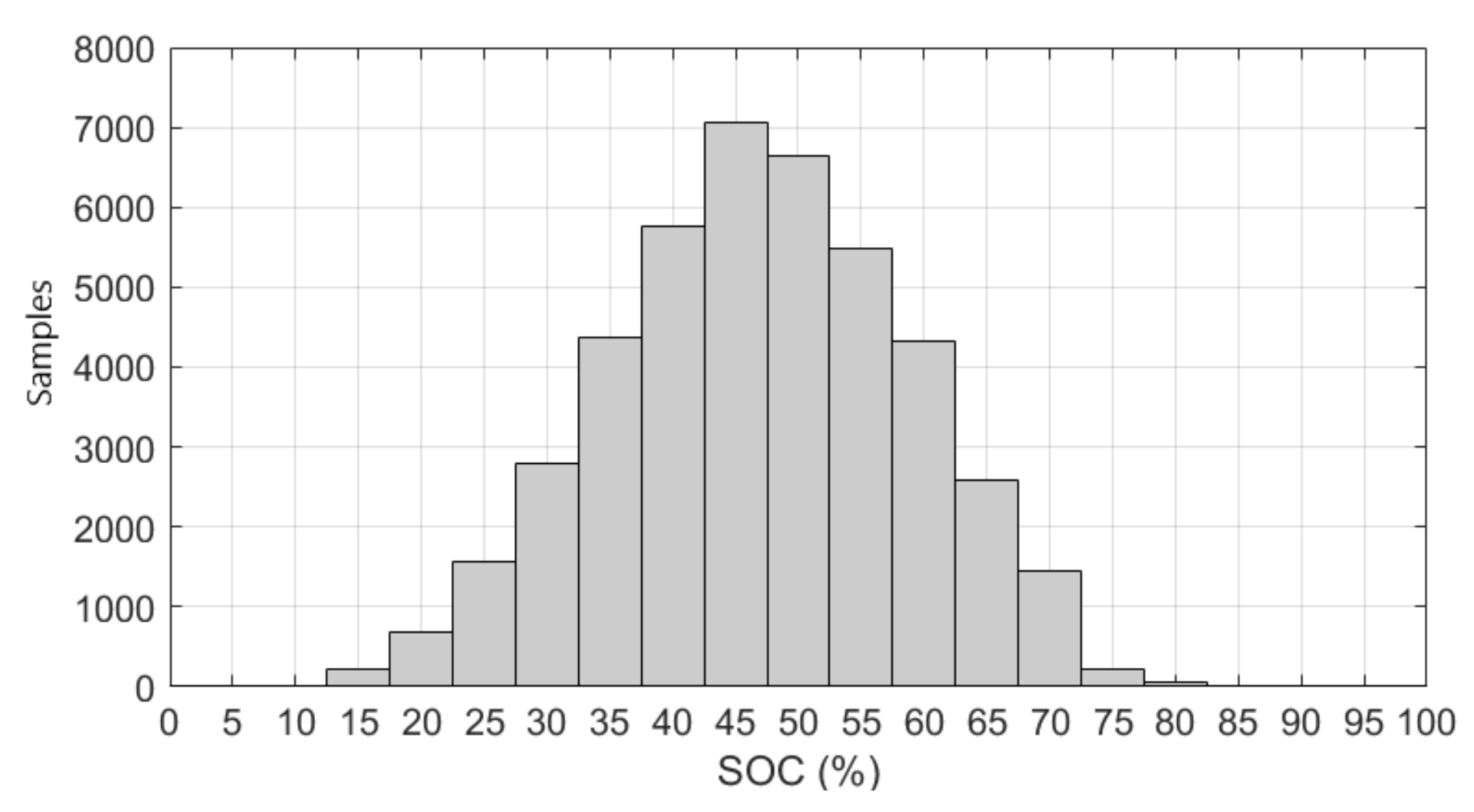
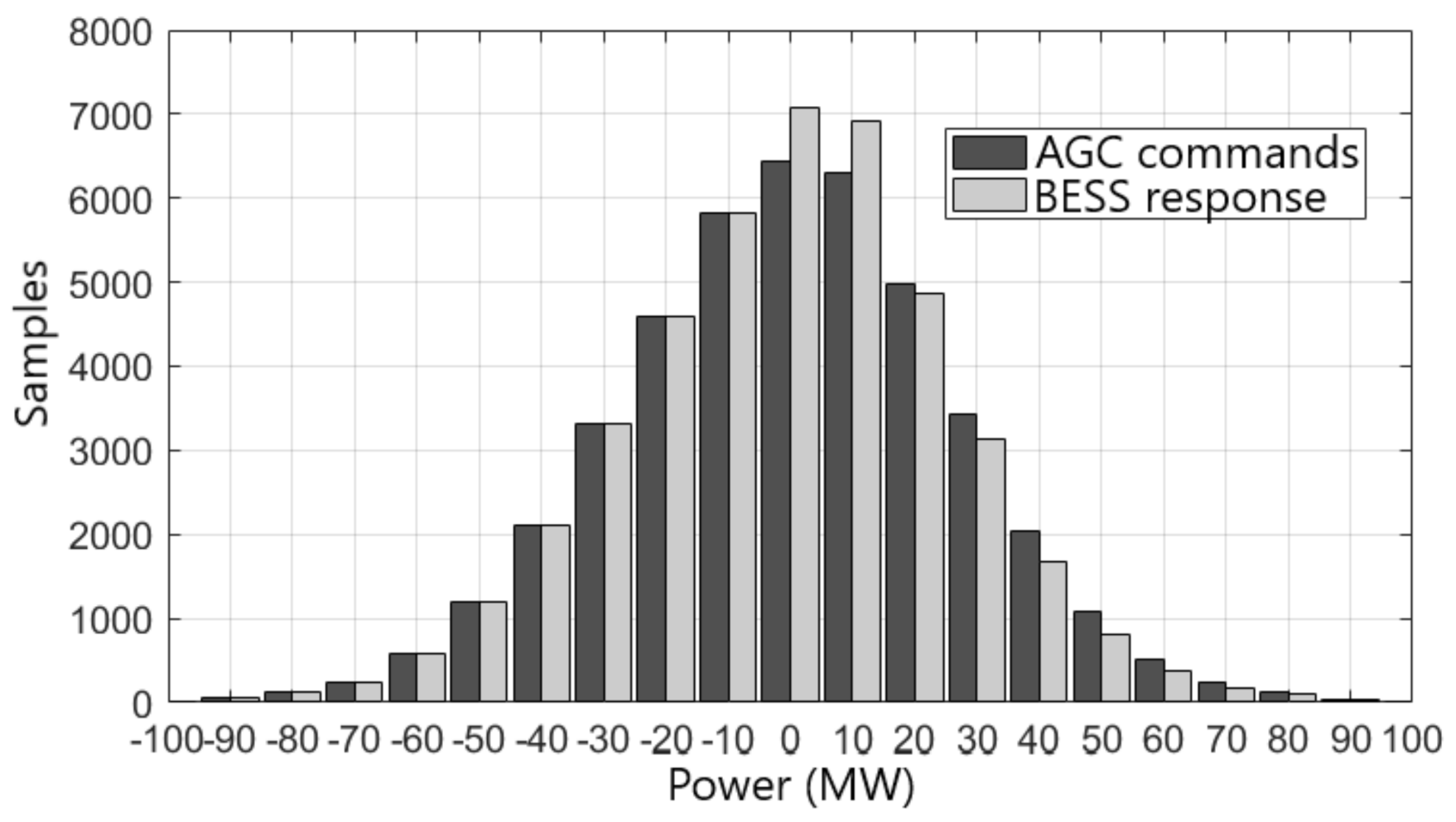
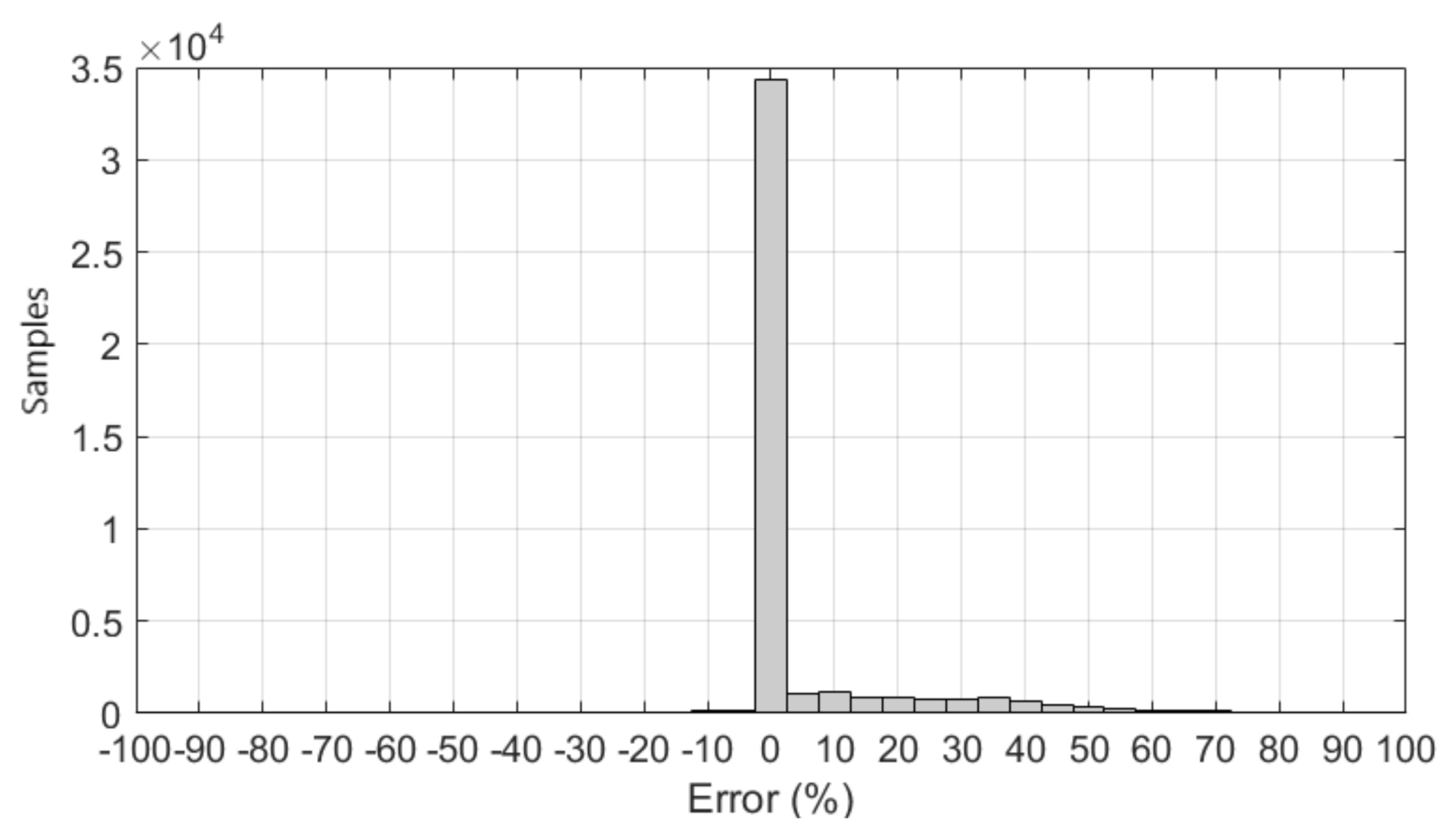

Publisher’s Note: MDPI stays neutral with regard to jurisdictional claims in published maps and institutional affiliations. |
© 2021 by the authors. Licensee MDPI, Basel, Switzerland. This article is an open access article distributed under the terms and conditions of the Creative Commons Attribution (CC BY) license (https://creativecommons.org/licenses/by/4.0/).
Share and Cite
Morales, C.; Lismayes, A.; Chavez, H.; Chamorro, H.R.; Reyes-Chamorro, L. The Impact of Aging-Preventive Algorithms on BESS Sizing under AGC Performance Standards. Energies 2021, 14, 7231. https://doi.org/10.3390/en14217231
Morales C, Lismayes A, Chavez H, Chamorro HR, Reyes-Chamorro L. The Impact of Aging-Preventive Algorithms on BESS Sizing under AGC Performance Standards. Energies. 2021; 14(21):7231. https://doi.org/10.3390/en14217231
Chicago/Turabian StyleMorales, Cristobal, Augusto Lismayes, Hector Chavez, Harold R. Chamorro, and Lorenzo Reyes-Chamorro. 2021. "The Impact of Aging-Preventive Algorithms on BESS Sizing under AGC Performance Standards" Energies 14, no. 21: 7231. https://doi.org/10.3390/en14217231
APA StyleMorales, C., Lismayes, A., Chavez, H., Chamorro, H. R., & Reyes-Chamorro, L. (2021). The Impact of Aging-Preventive Algorithms on BESS Sizing under AGC Performance Standards. Energies, 14(21), 7231. https://doi.org/10.3390/en14217231






